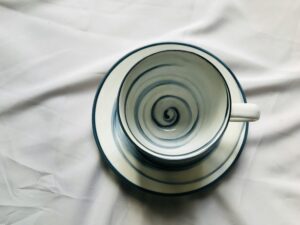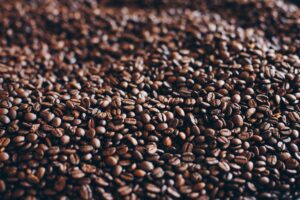Introduction
For centuries, coffee has been more than just a beverage—it has been a source of inspiration, a symbol of intellectual gatherings, and a cultural icon. Writers, poets, and artists have long embraced coffee as their creative fuel, using it to sharpen their minds and spark new ideas. In literature, coffeehouses have served as meeting places where revolutionary ideas and artistic movements were born. This article explores the fascinating relationship between coffee, art, and literature and its enduring influence on creative minds.
Table of Contents
Coffeehouses: The Birthplace of Artistic and Literary Movements
The coffeehouse has historically been a hub of creativity. In the 17th and 18th centuries, European intellectuals, writers, and artists gathered in coffeehouses to exchange ideas and debate social, political, and artistic issues. These establishments played a crucial role in fostering the Age of Enlightenment and movements like Romanticism and Modernism.
Famous examples include:
- Café de Flore (Paris) – Frequented by great writers and philosophers such as Jean-Paul Sartre and Simone de Beauvoir.
- Caffè Greco (Rome) – A favorite of poets like John Keats and Lord Byron.
- Café Central (Vienna) – Hosted figures like Sigmund Freud and Leon Trotsky.
These coffeehouses were the heart of literary and artistic discourse, where masterpieces were planned and revolutionary thoughts were brewed alongside steaming cups of coffee.
Coffee as a Literary Muse
Writers throughout history have attributed their inspiration to coffee. From Balzac’s extreme caffeine consumption to Hemingway’s love for espresso, coffee has been an essential part of the creative process for many.
- Honoré de Balzac reportedly drank up to 50 cups of coffee a day, claiming it fueled his intense writing sessions.
- J.K. Rowling has spoken about writing the early drafts of Harry Potter in coffee shops like Edinburgh’s The Elephant House.
- Ernest Hemingway often enjoyed strong coffee while writing in Parisian cafés, believing it helped him focus on storytelling.
For many writers, coffee is more than a stimulant; it’s a ritual that signals the beginning of the creative process, helping them dive into their worlds of fiction and poetry.
The Symbolism of Coffee in Literature
Coffee often appears as a powerful symbol in literature, representing everything from deep contemplation to social interactions.
- In T.S. Eliot’s “The Love Song of J. Alfred Prufrock,” coffee symbolizes routine and the passage of time: “I have measured out my life with coffee spoons.”
- Haruki Murakami frequently incorporates coffee in his novels, using it as a symbol of solitude and reflection.
- In Gabriel García Márquez’s works, coffee is a cultural motif, representing the daily life and traditions of Latin America.
From modern fiction to classical poetry, coffee continues to hold a significant place in storytelling, reflecting mood, time, and human connection.
Coffee and Visual Art
Just as coffee has inspired literature, it has also influenced visual artists. The vibrant café scenes depicted in paintings reflect the role of coffee in social and artistic life.
- Vincent van Gogh’s “Café Terrace at Night” captures the warmth and charm of a coffeehouse in Arles, France.
- Édouard Manet’s “The Café Concert” portrays the lively Parisian café culture.
- Pablo Picasso and other modernist painters were known to frequent cafés to discuss and sketch their ideas.
In contemporary times, coffee itself has become an art form. Latte art and coffee painting have gained popularity, showing how coffee continues to fuel artistic expression in unexpected ways.
The Role of Coffee in Modern Creativity
Today, coffee culture remains deeply connected to creativity. Writers, artists, and musicians often find themselves drawn to cafés for inspiration, much like their historical counterparts.
- Writers use coffee shops as creative workspaces, benefiting from the background noise and ambiance.
- Artists incorporate coffee in their paintings as a medium, using its rich brown hues to create stunning visual effects.
- Digital creators and filmmakers often showcase coffee in their work, using it as a symbol of sophistication and intellectual pursuit.
Whether through classic literature, iconic paintings, or modern digital content, coffee continues to play a central role in artistic and literary expression.
Conclusion
From the grand coffeehouses of the Enlightenment to today’s cozy cafés filled with laptop-wielding writers, coffee remains an integral part of the creative world. It has been the silent companion of some of the greatest literary and artistic minds, fueling their imagination and shaping their masterpieces. As long as artists and writers seek inspiration, coffee will continue to be an essential part of their creative journey.
FAQs
1. Why is coffee associated with creativity?
Coffee stimulates the brain by blocking adenosine, helping improve focus, alertness, and mental clarity—essential for creative work.
2. What are famous literary works inspired by coffee?
Works by Balzac, Proust, and Murakami often reference coffee, using it as a metaphor for time, routine, and intellectual engagement.
3. Which artists and writers were known coffee lovers?
Vincent van Gogh, Honoré de Balzac, Ernest Hemingway, and J.K. Rowling have all credited coffee with fueling their creative work.
4. How did coffeehouses influence literary movements?
Coffeehouses provided spaces for intellectual discussions, fostering the development of Enlightenment thought, Romanticism, and Modernism.
5. Can coffee really enhance artistic performance?
Yes, moderate coffee consumption can improve concentration and energy levels, helping artists and writers stay productive and inspired.
Whether you’re an aspiring writer or a passionate artist, the next time you take a sip of coffee, remember—you’re sharing a ritual with some of history’s greatest creative minds! ☕🎨📖






